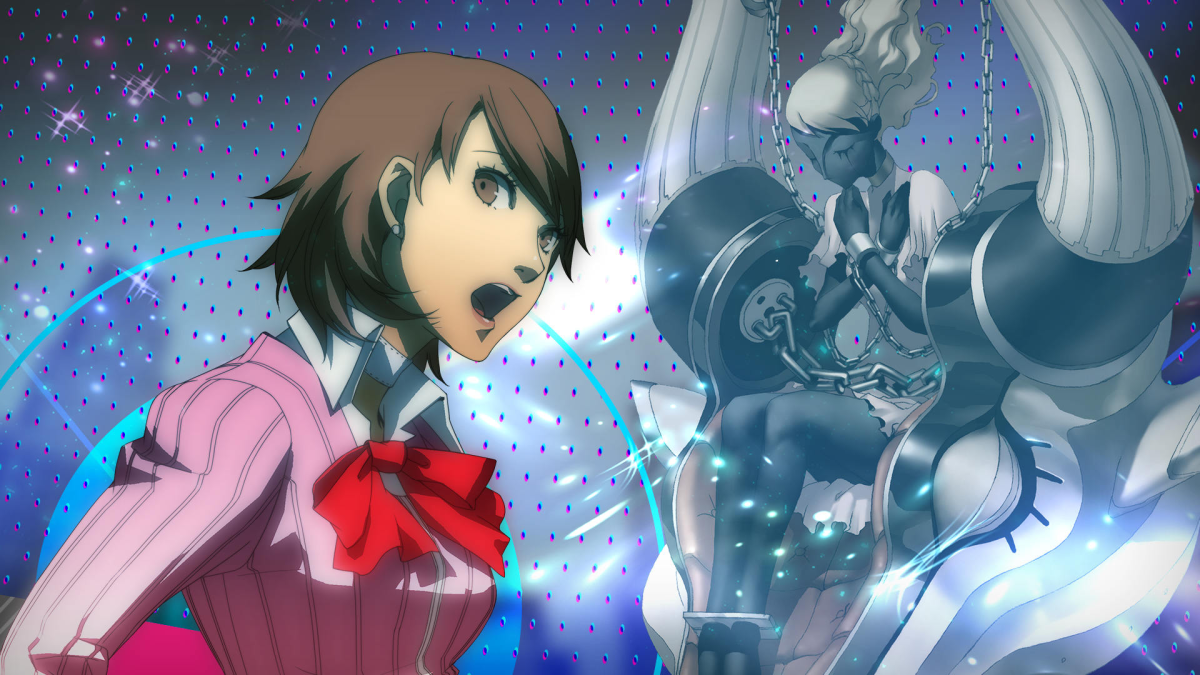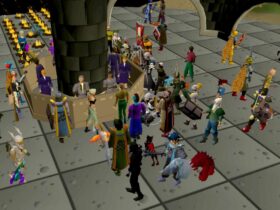Persona 3 Portable Review
All my worst thoughts occur in those ungodly hours after midnight. It was quiet, noises I wouldn’t normally notice grew louder, and I was painfully aware of every shadowy figure in a room with no lights. Sometimes my anxiety is exacerbated by an odd pile of clothes or feet without a blanket. It’s just a little too dark at times, and the eerie abyss of a dark bedroom is filled with existential horror.
need to know
What is it? A port of the PSP version of Persona 3, which includes a new protagonist, changes to the combat system, and a shift to visual novel-style gameplay.
Expect to pay: 20 dollars
Developer: Atreus
Publisher: Sega
commented on: Intel Core i7 – 10700k CPU, 64GB RAM, GeForce RTX 3080, Steam Deck
multiplayer game? No
go out: January 19
Association: Official website
The restless cast of Persona 3 Pocket Edition have to share their midnight fears with me, even though they have more supernatural fears to blame for them. This high school and gothic apocalyptic RPG mix welcomes you with a barrage of reminders that time is always running out and before you know it, Persona 3 is ticking down. You have a year to figure out who or what your opponent is in this game.
Persona 3 has most of the social RPG traits I loved in Persona 4 and 5. There are daily studies, flirting, exams and other worries of school life. At night, the focus shifts to the dungeon, traversing the mysterious Labyrinth of Tartarus. Along the way you’ll do the usual character gathering and shadow slaying, desperately searching for the all-powerful big bad who torments the city in the dark hours of the night. The PC debut was a port of the 2009 PSP retelling, which diverged from changes to the “director’s cut” version of the game, Persona 3 FES for the PlayStation 2. It’s better in some ways and questionable in others.
In Portable, Atlus simplified its approach by replacing most of the 3D environments with 2D, point-and-click systems, and removing animated video cutscenes. Events unfold through in-game models, text, and static artwork. Think more like a visual novel, but break out in 3D with dungeon crawling and turn-based combat. It also removes the lengthy epilogue that was added in FES, but adds the female protagonist route.
Those differences are the same here, but the Persona 3 portable PC version introduces some quality-of-life tweaks, remastered graphics, and Japanese voiceover options.
very good
(Image source: Sega)
Portable’s PSP origins have become more apparent over time–some scenes work just fine without the original animation, while others are a little bland–but the setting is still as creepy as it was years ago. Those highs and lows start early on, when the protagonists first summon their Personas, with the gun-like Evoker pressed against their temples. The tension of that moment, once highlighted with anime cutscenes, doesn’t just come through the in-game models. There wasn’t much animation in the original, but this is one of the few moments where the absence hurts.
I’ve found some friendships and everyday interactions to be better by choosing the female route
I miss those episodes, but the world’s unease and struggle with death is reflected in the writing and art. Everything feels haunted, and when the clock ticks down to the dark hour, Persona 3 taps into the cosmic uneasiness in style. Layers of grimy greens, blues, and yellows envelop anxious shadows, and the way Tartarus towers above everything establishes its terrifying scale. The shadows that inhabit the vast dungeon appear in all sorts of unnatural shapes and movements. Their eerie twists made climbing the hellish structures less tedious, even as I got caught up in a hilarious game of hide-and-seek trying to sneak up on them.
I’m defaulting to Portable’s female lead, mostly because I like some Social Link changes and some new music from the male version. Her iconic short-haired blue-haired counterpart is the one mentioned in the more Persona 3-related spinoffs, and the game has an odd moment in character selection where it claims his arc is the better one First experience. I don’t think it’s necessary to heed this warning. Neither path needs the spinoff’s setting or FES-specific epilogue to bring its story to a satisfying conclusion.
“Canon” be damned. She has better lines. (Image source: Sega)
Portable also cleaned up some areas of text. By choosing the female route, I found that some friendships and everyday interactions got better. Some members of your core team (Shinjiro, Akihiko, and Junpei) only get social links through her path, but you still have friendship options with the other high school girls on your team. Knowing a character like Junpei—the resident tough-guy nuisance—makes the babbling out of his mouth all the more empathetic. Key story beats retain their themes with either lead, but I found those twists to be more fleshed out after deepening their relationship with the crew.
it’s a long way
A looming infernal tower shattering the city skyline is definitely the ruler, but it adds hours of endless grind
While Persona 3’s art direction, cast, and constant reflection on fear make it one of Atlus’ best games, the same cannot be said for its monotonous dungeon crawling. You can choose to visit Tartarus most nights, but the skyscraper-like dungeons aren’t as vibrant as those in Persona 4 or 5. Conceptually and visually, a looming tower of hell breaks the absolute rules of the city skyline every night, but in practice, it adds hours to an endless “we were there” journey.
Combat damage and help. There is no doubt that the portable version is a better version of Persona 3’s combat system. On the PlayStation 2, you can only control the main character’s actions, while the AI directs the others. The portable version lets players control the entire party, so the game no longer feels unnecessarily punishing due to AI mistakes. This has always been one of my biggest complaints about FES – silently praying for Mitsuru to heal me, only to watch her send me to my death.
It wouldn’t be Persona without collecting the sometimes scary, sometimes cute demons you summon along the way. Blending characters together would fire up the part of my brain that loves disgusting excel spreadsheets, but the information is packaged in a very different way. I thoroughly enjoyed finishing Persona Compendium with every possible combination of demons, but wading in and out of more complex recipes to find a specific skill or creature bored me.
1 of 4 images
P3P does away with the quirky combat AI of the original. (Image credit: Sega) It may be a drag, but Tartarus is still disturbing. (Image credit: Sega) Koromaru: A good kid who carries a pocket knife. (Image credit: Sega) The decade-old UI is still sleeker than most. (Image source: Sega)
It’s not entirely fair, but it’s hard not to compare P3P’s Demonic Recipe to its modern-day successor. While the fifth game simplifies things like three-way fusion and tweaks its options, Portable puts a list on the table and lets me piece it all together in a complex game of guess who. Sometimes I’m more careful and try to find the critter I need, but often what I do is the equivalent of opening the fridge at night and grabbing a handful of shredded cheese. I don’t know if this meets my nutritional needs, but I’m too lazy to do anything else.
This fight felt like a rough draft for later Persona, but I still appreciate the turn-based combos that pop up throughout the series. You’ll come across roaming shadows, try attacking them first to start the encounter, then analyze and exploit their elemental weaknesses. Even after all these years, I still haven’t learned my lesson and occasionally try to brute force. Even on Normal difficulty, Shadow punishes this behavior, wiping out my entire party if I don’t employ a thoughtful strategy. Depending on how long I spent climbing Tartarus at night, I either admired the tension and satisfaction of the whole process or bemoaned its delay.
drag and click
It’s an overall upgrade, but some backgrounds will be roughed up. (Image source: Sega)
Portable’s transition from a 3D world to a 2D environment remains one of its more controversial choices, but in retrospect, you’re stuck on the same tiny “open” maps for nearly 70 hours. I’m going to use accelerated click movement. I said clicks, but that’s not entirely accurate either. It’s more of drag and click, which can sound tedious without customizing the controls. Imagine your mouse simulating an analog stick instead of hovering over a target and left-clicking. On the world map, the PSP-era cursor had to slide from point A to point B to make a selection. You can move faster, and a simple double-tap seems to work when the cursor doesn’t travel much. It’s a bit finicky, but if you set up a keybinding to make movement faster, it’s not bad. I recommend plugging in a controller or using the Steam Deck.
The PC version’s configuration options offer a large number of remappable schemes and other settings that have always worked well with my setup. Playing full screen at 3840×2160 at 120 FPS on my desktop with the rest of Persona 3 Portable set to high did not cause any issues. The game is almost as old as its high school protagonist, but I’m glad I didn’t add troubleshooting to the game.
For the most part, Portable looks great, but some environments and models perform better than others in the remake process. Backgrounds with more lighting effects are affected the most, adding messy layers of texture to the art. It’s no big deal, and the upgraded makeover is still a significant improvement.
doomsday is approaching
The dark hour intensifies the terror. (Image source: Sega)
It was a relief to revisit Persona 3 Portable via its PC port and realize that my fascination with the world was more than just a childhood emotion. The farther you go, the stronger a sense of sadness and dread grows—a painful, restless feeling that you can’t pinpoint in your chest. Otherworldly discontent seeps everywhere in the best possible way, whether in the haunting tick-tocks of dark moments or conversations with restless classmates.
Portable’s legacy system and dungeon crawling might not be the best of its kind, but its cast and tone easily make up for some of its shortcomings. Forgive Persona 3 for being a bit monotonous, and it delivers the inevitable horror in a twisted style that’s very different from the games that followed.
Shin Megami Tensei: Persona 3 Portable Edition: Price Comparison
(opens in a new tab) (opens in a new tab) (opens in a new tab)
Find more articles in our categories Gaming & News et encore Anime.
Thanks for visiting we hope our article Persona 3 Portable Review
, we invite you to share the article on Facebook, instagram and e-mail with the hashtags ☑️ #Persona #Portable #Review ☑️!














Leave a Review